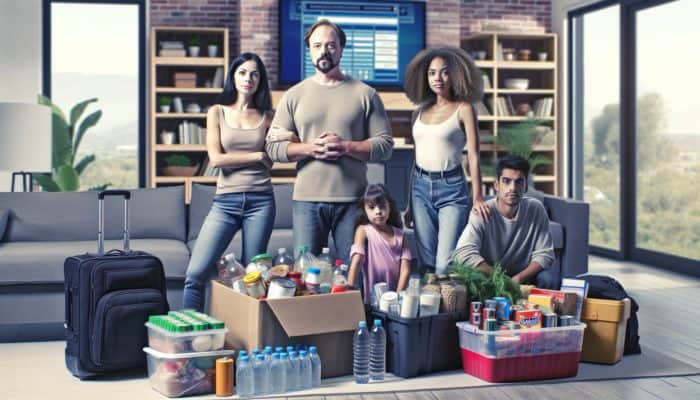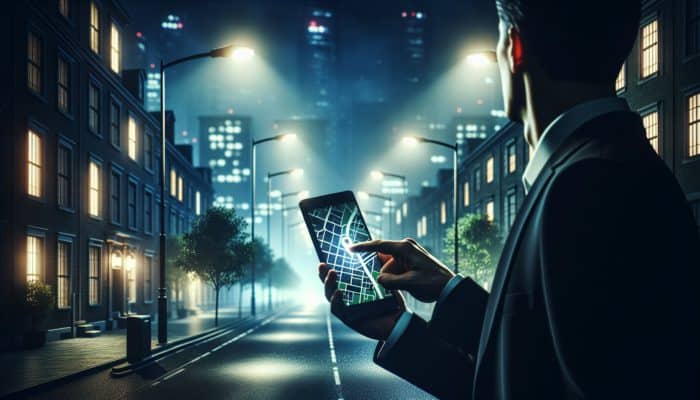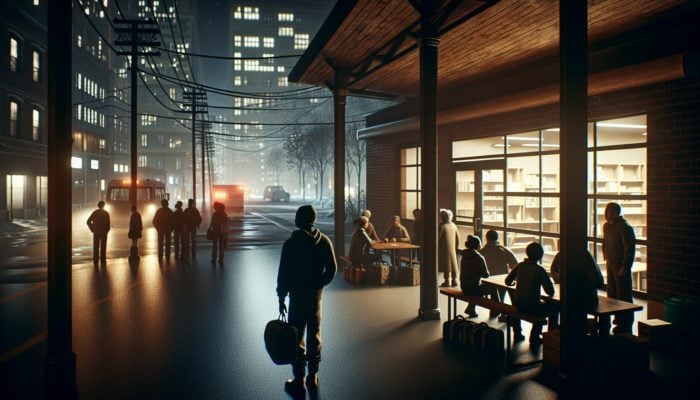Essential Steps for Comprehensive Blackout Preparedness
Gathering Critical Emergency Supplies for Blackout Situations

Surviving a city blackout requires proactive measures aimed at enhancing both your safety and comfort. Unforeseen power outages can disrupt daily routines and potentially stretch on for several days. Therefore, it is vital to stock up on sufficient supplies to sustain you and your loved ones for a minimum of three days. Your emergency kit should include a variety of non-perishable food items, clean drinking water, batteries, and other essential items. Preparing in advance not only meets your immediate physical needs but also fosters a sense of security and tranquility during unpredictable circumstances.
- Non-perishable food items (such as canned goods, dried fruits, and nuts)
- Drinking water (at least one gallon per person per day)
- Batteries (various sizes to power flashlights and radios)
- First aid kit (including bandages, antiseptics, and essential medications)
- Manual can opener (if your food supplies contain canned goods)
- Portable phone charger or power bank
- Flashlights (operating on battery or solar power)
- Emergency cash (small denominations and coins)
Each item in your emergency supply kit plays a crucial role in ensuring comfort and safety during a blackout. Access to clean drinking water is vital, as dehydration can quickly escalate into serious health issues. Your food selections should focus on easy-to-prepare options, such as canned vegetables, soups, and energy bars. Ultimately, the aim is to create a self-sufficient environment that minimizes reliance on outside resources until electricity is restored. Collecting these essentials empowers you and builds resilience in challenging times.
Crafting a Comprehensive Emergency Response Strategy
Establishing a detailed emergency plan is paramount for effective blackout preparedness. This plan should outline communication protocols and predetermined meeting points in case family members become separated during the outage. Clear communication methods ensure that everyone understands the actions required when the power fails. Designating specific meeting places can significantly alleviate anxiety and confusion during stressful situations.
- Identify and confirm emergency contacts (friends, relatives, or neighbors)
- Select a specific meeting point within your home as well as an external location
- Establish a plan for communication methods (texts, phone calls, or messaging apps)
- Regularly discuss the plan to ensure everyone is familiar with it
Consider teaching family members how to use battery-operated radios or other communication devices effectively to stay informed during a blackout. Conducting practice drills ensures that everyone understands their roles and responsibilities when unexpected situations arise. Being well-prepared and aware can significantly reduce feelings of panic and uncertainty, allowing you to concentrate on immediate needs without the added stress of worrying about the safety of your loved ones.
Understanding the Common Causes of Blackouts for Better Preparedness
Gaining insight into the common causes of blackouts is essential for effective readiness. Power outages can arise from a variety of sources, including severe weather conditions, equipment failures, or human error. By recognizing these potential causes, you can better anticipate possible disruptions and may even implement proactive measures to lessen their impact.
Expert Insights on Navigating City Blackouts

Identifying the Most Effective Light Sources for Emergencies
In the event of a blackout, having access to reliable light sources is vital for ensuring both safety and comfort. The most effective options include battery-powered lanterns, flashlights, and glow sticks, each serving distinct functions in your emergency toolkit. Battery-powered lanterns provide wide area illumination, making them ideal for communal spaces, while flashlights offer directed lighting, perfect for navigating through darkened areas.
Furthermore, glow sticks represent a versatile choice; they require no batteries and can be strategically placed to provide light or mark pathways. Prioritizing a variety of lighting options guarantees that you are equipped for diverse scenarios. When selecting these items, take into account the durability and safety of each light source.
Whenever possible, opt for LED-powered devices as they are energy-efficient and possess a longer lifespan. This thoughtful choice extends the usability of your light sources and minimizes the frequency of battery changes, which is particularly important during lengthy power outages. Ultimately, the right lighting solutions enhance your ability to maintain safety and a sense of normalcy during challenging times.
Strategies for Staying Informed During a Blackout
Remaining informed throughout a blackout is crucial for making sound decisions. Utilizing battery-powered or hand-crank radios is one of the most effective methods to receive news and emergency alerts. These devices function independently of the electrical grid, making them invaluable during power outages.
Investing in a radio capable of accessing multiple frequencies allows you to receive updates on the blackout status, emergency services information, and repair progress. Additionally, consider downloading emergency preparedness apps on your mobile devices while you still have power. These applications frequently provide alerts and information about local incidents, which can be crucial during an unforeseen blackout.
Establishing connections with neighbors can enhance your information-sharing capabilities. By communicating with those in your vicinity, you can collectively stay updated on developments in your area. Sharing resources and knowledge fosters a sense of community and equips you with a broader understanding of your situation. Remember, knowledge is power, and staying informed is an integral part of managing through a blackout.
Steps to Take If You Find Yourself Stranded During a Blackout

If you encounter a blackout while away from home, your primary concern should be finding a safe location to remain until power is restored. Whether you are at work, in transit, or visiting friends, your first task is to assess your current environment and circumstances.
Look for public shelters or establishments equipped with emergency power, such as certain hotels, community centers, or designated emergency shelters. These locations can provide temporary lodging, food, and access to essential information. Ensure that you communicate your location to family members to alleviate any worries they may have about your safety.
If immediate shelter is unavailable, consider staying in a well-lit, heavily populated area until it is safe to move. Avoid traveling alone, as being in a group can enhance safety. Connecting with others in similar situations can foster camaraderie and provide additional support. Always prioritize your safety until you can return home securely.
Enhancing Safety During Blackouts
Effective Strategies for Securing Your Home
Enhancing the security of your home during a blackout is crucial for protecting against potential intruders. The sudden loss of power can create opportunities for crime, especially in urban settings. Strengthening your home’s security measures offers peace of mind and enhances protection for you and your loved ones.
Start by ensuring all doors and windows are securely locked, and consider utilizing barricades to reinforce entry points. This simple precaution can deter potential intruders and provide an additional layer of security. Investing in motion-sensor lights powered by batteries can illuminate your property when someone approaches, thus increasing visibility and enhancing safety.
Moreover, fostering strong communication with neighbors is beneficial. A robust community network can effectively deter crime, as neighbors look out for one another during vulnerable times. Forming a neighborhood watch group or staying connected through group chats can facilitate the sharing of updates and concerns. By collaborating with those around you, you bolster collective safety and reinforce a sense of community during challenging situations.
Smart Management of Food and Water Supplies
Effectively managing food and water supplies during a blackout is vital for the health and well-being of your family. Without electricity, refrigeration becomes a challenge, but there are practical strategies to handle perishable items. Utilizing coolers with ice packs can help maintain a safe temperature for food items that require refrigeration, such as meats and dairy products.
Furthermore, it is essential to establish a stockpile of non-perishable food items. Foods like canned goods, dried fruits, and nuts can provide necessary energy and nutrients without the need for cooking. When organizing your food supplies, always label storage containers and maintain an inventory to ensure items are consumed before they spoil.
For water, ensure you have at least one gallon per person per day, stored in clean, sealed containers. Consider investing in water purification tablets or filters for emergencies, as they can make questionable water supplies safe to consume. Prioritizing hydration by establishing a routine for water consumption not only supports physical health but also contributes to a calmer environment during difficult times.
Understanding the Risks of Carbon Monoxide Exposure During Blackouts
Recognizing the dangers of carbon monoxide (CO) is critical when considering alternative power sources during a blackout. Many individuals may resort to using generators, grills, or other fuel-burning devices indoors, leading to hazardous levels of carbon monoxide accumulation. CO is a colorless, odorless gas that poses serious health risks, including unconsciousness or even death.
To mitigate these risks, always operate generators outdoors, far from windows, doors, and air intakes. Ensure your home has functional carbon monoxide detectors to alert you to the presence of this dangerous gas. Regular testing and battery replacement of these detectors should be integral to your home safety routine.
Educating your family about the symptoms of CO poisoning—such as headaches, dizziness, and nausea—can empower them to respond swiftly if exposure occurs. Knowledge is a powerful tool in preventing carbon monoxide poisoning, especially during high-stress situations like blackouts. Prioritize safety by making informed choices regarding your energy sources to avoid unnecessary risks during outages.
Utilizing Safe Alternative Light Sources
When navigating a blackout, employing safe alternative light sources can significantly enhance your ability to move throughout your home and maintain a sense of normalcy. Flashlights, lanterns, and glow sticks are excellent choices, each offering unique advantages. Flashlights, with their focused beams, are particularly useful for directing light where it is most needed, allowing you to maneuver confidently in the dark.
Lanterns provide a wider area of illumination, making them ideal for communal spaces or outdoor gatherings. When selecting lanterns, choose battery-operated or solar-powered options to minimize reliance on disposable batteries. Glow sticks serve as a non-heat-emitting light source that is safe for children and can be strategically placed around your home to mark pathways and hazards.
It is wise to practice safe usage by keeping a supply of extra batteries and ensuring your light sources are easily accessible. Designate a specific area in your home where these items can be stored, along with clear instructions for their use. This preparation not only offers peace of mind but also fosters a sense of control during chaotic situations. Remember, the aim is to create a safe, well-lit environment that allows you to thrive, even during the darkest moments.
Dealing with the Aftermath of a Blackout
Steps to Assess Damage and Loss Following Power Restoration
Once power has been restored, assessing damage and loss becomes a crucial step in the recovery process. Begin by thoroughly examining your home for signs of water damage, structural issues, or spoiled food supplies. Conducting this assessment will help you identify what requires immediate attention and what can be dealt with gradually.
If you discover significant damage, document it with photographs and notes to assist in filing any necessary insurance claims. Review your emergency supplies to pinpoint which items need replenishing, as this will facilitate a smoother transition back to normalcy. Understanding your resource needs will guide your actions and help prioritize recovery tasks.
Additionally, consider reaching out to neighbors or community organizations for assistance or to share resources. Offering help to one another can foster a collaborative atmosphere, making the recovery process more manageable. After assessing damage, discussing experiences with friends and family can provide comfort, as sharing feelings promotes emotional healing during stressful times.
Reestablishing Normalcy and Routine After a Blackout
Gradually restoring normalcy following a blackout is essential for emotional well-being and stability. Start by replenishing your emergency supplies, ensuring you are prepared for potential future disruptions. Create a checklist of items to replace and prioritize the replenishment of frequently utilized products, such as food and water.
At the same time, reconnect with others in your community. Participate in local events, group discussions, or community forums that address the recent blackout experience. Engaging with others about the event can help normalize feelings and foster a supportive environment. Sharing stories and insights can also lead to improved preparedness for future emergencies.
As you slowly return to your routine, be mindful of your mental and emotional state. Engage in activities that promote relaxation and well-being, whether through mindfulness practices, exercise, or hobbies. These actions can help you regain a sense of control and stability after the disruption caused by a blackout.
Ways to Support Your Community After a Blackout
Supporting your community during the recovery phase following a blackout is a vital act of solidarity. This challenging time can be difficult for many, and offering assistance can help restore a sense of unity and resilience among neighbors. Start by sharing resources, such as food, water, or tools that may be needed for repairs.
Consider organizing a community meeting or gathering to discuss experiences, share information, and explore strategies for preparing for potential future outages. This collective approach fosters communication and allows individuals to express their concerns and share ideas for improvement. By creating a collaborative environment, you contribute to building a stronger community.
Furthermore, volunteering with local organizations or relief efforts can amplify your impact. Numerous communities have resources in place to support those most affected by outages. By getting involved, you help ensure that everyone has access to necessary support. The act of helping others not only uplifts those around you but also instills a sense of purpose and fulfillment in yourself during challenging times.
Research-Supported Advantages of Enduring a City Blackout
Psychological Benefits of Overcoming a Blackout
Surviving a blackout can provide significant psychological benefits, including the development of resilience and a strengthened sense of community. Facing adversity often leads to personal growth, as individuals learn to adapt and persevere under challenging conditions. Overcoming obstacles can boost self-confidence and encourage a proactive mindset.
Moreover, shared experiences during a blackout can cultivate closeness among neighbors and community members. When people unite to face a crisis, it strengthens social bonds and fosters enduring friendships. This newfound sense of community can serve as a vital support system during future emergencies, reinforcing the idea that individuals are never truly alone.
Engaging in collaborative problem-solving during a blackout also enhances critical thinking skills and resourcefulness. As individuals adapt to unforeseen circumstances, they often discover innovative solutions to the challenges they encounter. This adaptability becomes a valuable asset across various aspects of life, promoting a more resilient mindset in the face of future difficulties.
Improving Preparedness for Future Emergencies
Experiencing a blackout can serve as a powerful motivator to bolster preparedness for future emergencies. The insights gained during such events often lead individuals to reassess their readiness and identify areas for improvement in their emergency plans. This reflection can instill a greater sense of responsibility, prompting proactive measures to ensure safety and comfort in the future.
Actively engaging with your community to share insights can amplify the effects of this motivation. By participating in local preparedness workshops or discussions, you contribute to a culture of awareness and vigilance that benefits everyone. Implementing feedback and collective strategies can foster a more resilient community in the face of upcoming disruptions.
Additionally, consider revisiting and updating your personal emergency plans regularly. As circumstances evolve, so too do potential threats and hazards. Maintaining an ongoing dialogue with family members about preparedness strategies ensures that everyone remains informed and engaged. This proactive approach empowers individuals and reinforces the importance of collective awareness in fostering a secure environment.
Gaining Valuable Lessons from Past Blackout Experiences
Analyzing past blackout experiences can yield valuable insights that enhance future survival strategies. Reflecting on what was effective and what could have been improved allows individuals to refine their emergency plans effectively. This process encourages a critical evaluation of preparedness measures, prompting individuals to identify gaps or areas for enhancement.
Consider conducting post-event discussions within your family or community to share experiences and gather feedback. Discussing the challenges faced and the solutions implemented allows for a collective learning experience. This collaboration fosters a culture of continuous improvement, where insights can be shared and adopted by others.
It is also beneficial to document these experiences in a journal or community report. Keeping track of effective strategies and lessons learned can serve as a reference for future emergencies, ensuring that valuable information is preserved over time. This proactive approach to learning from the past can significantly enhance readiness for future events and instill a sense of empowerment among all individuals involved.
Enhancing Physical Health and Safety Preparedness
Surviving a blackout often encourages the adoption of physical health and safety measures that improve overall preparedness. Individuals tend to recognize the importance of maintaining their health and well-being even in the face of adversity. This awareness frequently leads to the development of healthier lifestyle habits, such as improved nutrition and increased physical activity.
Moreover, the experience of navigating a blackout can prompt individuals to reassess their home safety protocols. Ensuring that emergency supplies are organized and easily accessible promotes a proactive mindset regarding health and safety. By becoming more aware of their surroundings and potential hazards, individuals can better protect themselves and their families during emergencies.
Participating in community safety initiatives can further amplify these benefits. Collaborating with neighbors to create safety plans or engage in emergency drills enhances group preparedness and fosters collective resilience. By working together, community members not only develop safety protocols but also cultivate a strong support network that can be invaluable during future challenges. The focus on physical health and safety becomes a shared value, creating an atmosphere of unity and empowerment.
Proven Strategies for Surviving a City Blackout
Effectively Utilizing Alternative Energy Sources
Considering alternative energy sources is a valuable strategy during a blackout, as they can provide reliable power for essential devices. Solar chargers and portable power stations serve as excellent options for maintaining energy access when the grid goes down. Solar chargers harness sunlight to generate energy, enabling you to keep small devices charged without depending on conventional power sources.
Investing in a portable power station is another effective strategy. These devices can store energy from solar panels or be charged from a wall outlet when electricity is available. They typically feature multiple outlets, making them suitable for charging various devices simultaneously. This flexibility allows you to prioritize which devices need power based on your immediate needs.
As you explore energy alternatives, consider the longevity and upkeep of your devices. Research the best options available and consult user reviews to find reliable sources. Additionally, keep in mind that combining various energy sources can enhance your overall resilience. By diversifying your energy strategies, you create a robust safety net that prepares you for unforeseen circumstances.
Staying Comfortable During Extreme Temperature Conditions
Maintaining a comfortable temperature during a blackout can be challenging, yet it is critical for your well-being. To stay cool, utilize fans or battery-operated coolers, as they can circulate air throughout your living space. Strategically placing these devices near windows or doors can enhance airflow, creating a more comfortable environment.
In colder conditions, layering blankets and wearing warm clothing can help retain body heat. Battery-powered portable heaters can also be effective, provided they are used safely and responsibly. Exercise caution regarding fire hazards when using any heating devices, ensuring they are positioned away from flammable materials.
Consider developing a household temperature regulation plan before a blackout occurs. Discuss with family members the best practices for staying comfortable in various weather conditions, ensuring everyone is aware of the steps they should take. By fostering a proactive approach, you enhance resilience and adaptability during challenging situations.
Ensuring Effective Communication During a Blackout
Maintaining communication during a blackout is essential for staying connected with loved ones and obtaining crucial information. To ensure effective communication, keep your phone charged and have spare batteries available for backup. Consider investing in a power bank to keep your devices functional for extended periods.
Additionally, explore alternative communication methods, such as walkie-talkies or two-way radios, which operate independently of the electrical grid. Establishing a communication plan with family members will ensure everyone knows how to reach one another and what to do in case of separation. This proactive approach alleviates anxiety and fosters a sense of security.
Throughout the blackout, periodically check in with family and neighbors to share information. Establishing a communal support network can enhance overall safety and preparedness. By staying connected, you reinforce the importance of community during challenging situations, ultimately leading to a stronger, more resilient society.
Frequently Asked Questions About Blackout Preparedness
What Items Should I Include in My Blackout Emergency Kit?
Your blackout emergency kit should contain non-perishable food, water, batteries, a flashlight, a first aid kit, and a battery-powered radio to ensure you are well-prepared for any situation.
How Long Can Food Last Without Refrigeration?
Most non-perishable foods can last indefinitely, while refrigerated items such as dairy or meat should be consumed within a few hours to prevent spoilage and ensure safety.
How Can I Stay Informed During a Blackout?
Utilize a battery-powered or hand-crank radio to receive emergency alerts and updates. Additionally, checking in with neighbors can help share vital information.
What Risks Are Associated with Using Generators Indoors?
Using generators indoors poses serious risks of carbon monoxide poisoning, which can be fatal. Always operate generators outdoors and away from windows and doors to ensure safety.
How Can I Assist My Community After a Blackout?
You can support your community by sharing resources, checking in on neighbors, and participating in recovery efforts to foster collaboration and resilience among residents.
What Should I Do If I Experience Food Spoilage After a Blackout?
Inspect your food for any signs of spoilage. Discard any perishable items that have been above 40°F for more than two hours, and document any losses for insurance purposes.
How Can I Minimize Panic During a Blackout?
Preparation is key. Familiarize yourself with your emergency plan, stock essential supplies, and maintain clear communication with family members to help mitigate panic during an outage.
What Are Some Effective Light Sources During a Blackout?
Effective light sources include LED flashlights, battery-powered lanterns, and glow sticks. Each serves different purposes and helps maintain visibility and safety in dark conditions.
How Can I Enhance My Blackout Preparedness?
Regularly review and update your emergency plan, practice drills with family, and stay informed about local resources and community preparedness initiatives to ensure readiness for future blackouts.
What Psychological Benefits Can Arise from Experiencing a Blackout?
Experiencing a blackout can enhance resilience and foster community bonds as individuals learn to adapt, collaborate, and support one another during challenging situations.
Discover more on X!
The post Surviving a City Blackout: Essential Tips appeared first on Survival Bite.
The Article Essential Tips for Surviving a City Blackout Was Found On https://limitsofstrategy.com

